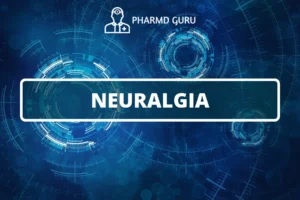Schizophrenia is a complex and chronic mental disorder that affects how a person thinks, feels, and behaves. It is characterized by a combination of symptoms that may include hallucinations, delusions, disorganized thinking, and social withdrawal. In this article, we will explore the etiopathogenesis of schizophrenia, including its underlying mechanisms, and discuss the pharmacotherapy options used in its treatment.
SCROLL DOWN TO THE BOTTOM OF THIS PAGE FOR ACTUAL NOTES.
Table of Contents
- Introduction
- Understanding Schizophrenia
- Etiology of Schizophrenia
- Neurotransmitter Imbalances
- Genetic Factors
- Environmental Factors
- Clinical Features and Diagnosis
- Treatment Options
- Pharmacotherapy for Schizophrenia
- Non-Pharmacological Approaches
1. Introduction
Schizophrenia is a complex mental disorder that can significantly impact an individual’s life and well-being. Understanding the etiopathogenesis, or the underlying causes and mechanisms, of schizophrenia is crucial for early detection, appropriate treatment, and effective management.
2. Understanding Schizophrenia
Schizophrenia is a chronic brain disorder that affects how a person thinks, perceives reality, and relates to others. It typically emerges in late adolescence or early adulthood, although it can occur at any age. The exact cause of schizophrenia is not fully understood, but it is believed to involve a combination of genetic, environmental, and neurochemical factors.
3. Etiology of Schizophrenia
The etiology of schizophrenia is multifactorial, involving various contributing factors:
4. Neurotransmitter Imbalances
Dysregulation of neurotransmitters, particularly dopamine, glutamate, and serotonin, has been implicated in the pathophysiology of schizophrenia. An excess of dopamine activity in certain brain regions is associated with positive symptoms such as hallucinations and delusions. Glutamate, an excitatory neurotransmitter, is also involved in schizophrenia and may contribute to cognitive and negative symptoms.
5. Genetic Factors
Genetics plays a significant role in schizophrenia. Studies have shown that individuals with a family history of schizophrenia are at a higher risk of developing the condition. However, no single gene is solely responsible for schizophrenia. Rather, multiple genes, each with small effects, interact with environmental factors to increase susceptibility to the disorder.
6. Environmental Factors
Environmental factors can contribute to the development of schizophrenia, especially in individuals with a genetic predisposition. Factors such as prenatal infections, maternal stress during pregnancy, complications during childbirth, and exposure to certain toxins or drugs have been associated with an increased risk of developing schizophrenia.
7. Clinical Features and Diagnosis
Schizophrenia is characterized by a range of symptoms that can be classified into positive, negative, and cognitive symptoms.
- Positive symptoms: These include hallucinations (perceiving things that are not there), delusions (false beliefs), disorganized thinking and speech, and abnormal movements.
- Negative symptoms: These involve a loss or reduction of normal functioning, such as reduced emotional expression, social withdrawal, and diminished motivation.
- Cognitive symptoms: These affect cognitive processes, including attention, memory, and problem-solving.
Diagnosing schizophrenia involves a comprehensive evaluation of symptoms, medical history, and ruling out other possible causes of the symptoms. Healthcare professionals use standardized diagnostic criteria, such as those outlined in the Diagnostic and Statistical Manual of Mental Disorders (DSM-5), to make an accurate diagnosis.
8. Treatment Options
Treatment for schizophrenia aims to reduce symptoms, prevent relapses, and improve overall functioning and quality of life. It typically involves a combination of pharmacotherapy, psychotherapy, and psychosocial support.
9. Pharmacotherapy for Schizophrenia
Pharmacotherapy plays a crucial role in the management of schizophrenia. Medications known as antipsychotics are the primary pharmacological treatment for schizophrenia. They work by blocking dopamine receptors in the brain, helping to reduce the positive symptoms of the disorder.
Antipsychotic medications are classified into two categories:
- First-generation (typical) antipsychotics: These include medications such as haloperidol and chlorpromazine. They primarily target dopamine receptors and are effective in controlling positive symptoms but may have more side effects.
- Second-generation (atypical) antipsychotics: These medications, including risperidone, olanzapine, and quetiapine, also block dopamine receptors but have a broader effect on other neurotransmitters. They are often preferred due to their lower risk of movement disorders but may have other side effects such as weight gain.
The choice of medication depends on various factors, including the severity of symptoms, individual response, and potential side effects. Close monitoring and regular follow-up with a healthcare professional are essential to ensure the effectiveness and safety of the prescribed medication.
10. Non-Pharmacological Approaches
In addition to medication, non-pharmacological approaches can be beneficial in managing schizophrenia. These may include:
- Psychotherapy: Various forms of psychotherapy, such as cognitive-behavioral therapy (CBT) and family therapy, can help individuals manage symptoms, improve coping skills, and enhance overall functioning.
- Psychosocial support: Supportive interventions, such as vocational rehabilitation, housing assistance, and social skills training, can aid in promoting independent living and community integration.
- Lifestyle modifications: Engaging in regular physical exercise, adopting a healthy diet, and ensuring sufficient sleep can contribute to overall well-being and potentially reduce symptom severity.
ACTUAL NOTES:




